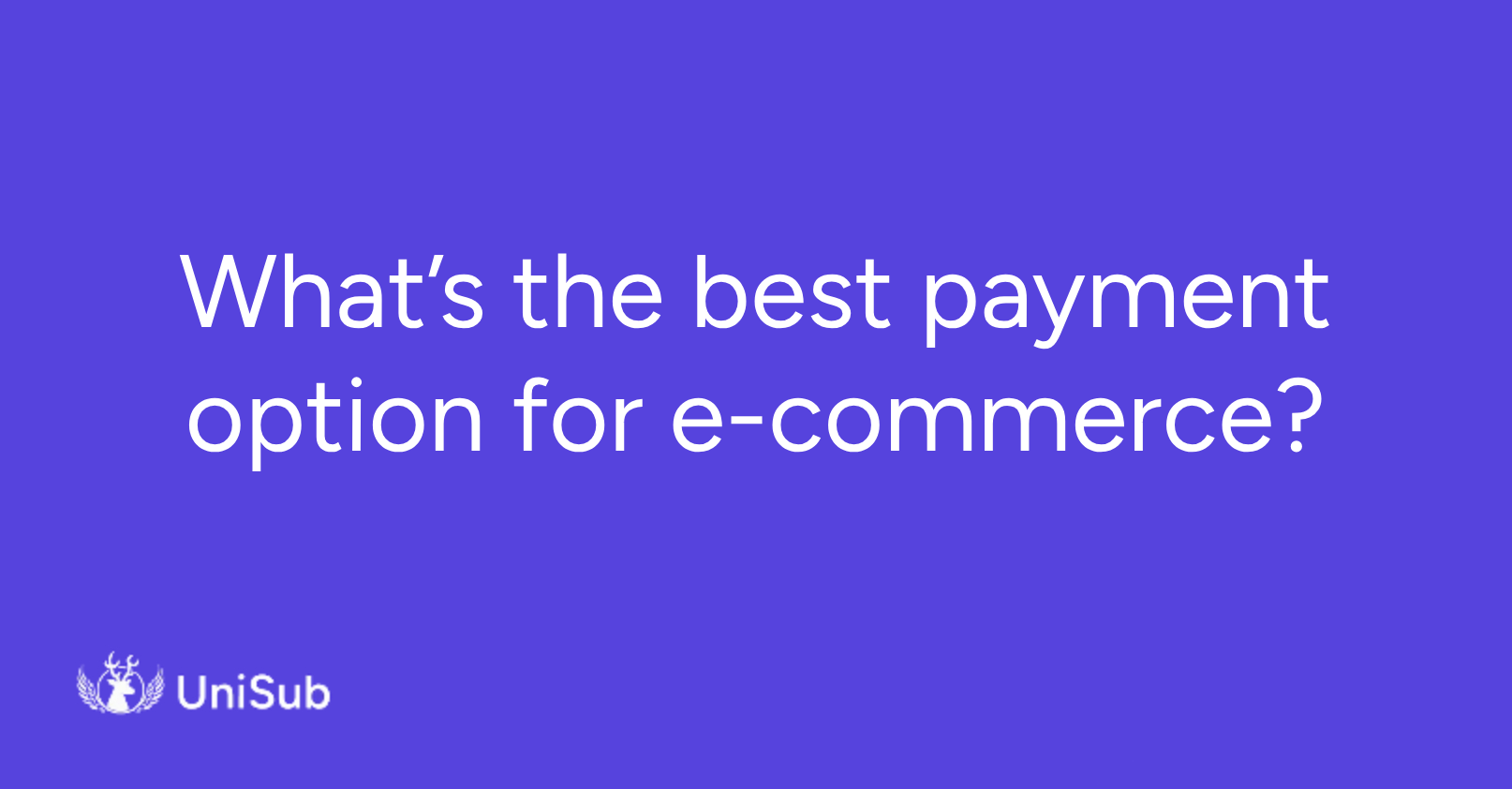What’s the best payment option for e-commerce?

So you have an ecommerce store or you’re about to start one. Choosing your payment options is easy, right? Just drag and drop a “Buy now” button, and you’re done. But once you get to work, you’ll realize this is far from the truth.
There’s coding, compatibility – and most importantly, your chosen payment options.
You don’t want to miss out on a single sale because someone couldn’t find a way to pay you.
We’ll walk you through the best options for e-commerce, so you can offer your customers a frictionless experience that lowers your cart abandonment rate. We’ll also share our preferred option later on.
1. PayPal, Google Pay, Apple Pay, and Amazon Pay
PayPal has become a standard in online payments. It’s easy to set up, widely accepted, and customers are already familiar with it. With just a few clicks, your customers can complete their purchase.
Google Pay and Apple Pay are all about convenience too. They’re fast, secure, and customers don’t need to grab their wallets to enter card details because they’re already saved.
Amazon Pay lets your customers pay with their Amazon account. Millions of people trust Amazon with their payment info, and by offering Amazon Pay, you’re tapping into that trust.
You can also split payments for larger orders, which increases sales, especially for high-ticket items.
But these options aren’t without their flaws. Relying solely on them is a risky move.
They don’t work as easily everywhere outside the US. Furthermore, not everyone trusts Google and Apple with their bank information.
PayPal isn’t a preferred option for many people as well. Check out what these Redditors had to say about it.
On the same thread, entrepreneurs were complaining about its fees as well:
Don’t get us wrong. You still need these options in case a client prefers them. But they’re just not enough–and this takes us to the next essential payment gateway.
2. Stripe and Shopify Payments
Stripe is one of the most popular payment gateways for e-commerce, and for good reason. It’s easy to set up, and its flexible API lets you customize your payment flow however you want.
And if your e-commerce business is on Shopify, you have an obvious option.
With Shopify Payments (which is powered by Stripe), you get Apple and Google Pay integrated into your store. It also saves you from paying extra fees when using third-party payment gateways like Lightspeed, which matters revenue-wise.
However, just like any payment provider, Stripe isn’t perfect. While it’s a strong option for most businesses, millions of users can’t access it.
So, let’s talk about that for a second.
Stripe comes with limitations. First off, it’s not available everywhere. Entire markets can’t use it unless they’re operating as registered businesses.
If a customer is outside the regions where Stripe is available, they can’t pay you even if they want to. You’re missing out on potential profits just because Stripe isn’t an option for them.
This is exactly the situation we’ve seen with platforms like Substack. Our Co-Founder, Nodari Kolmakhidze, talked about it in a recent LinkedIn post.
And that brings us to what we believe is a must-have option in 2024…
3. Crypto Payments
Remember when we said you don’t want to miss out on a single sale? If you’re only relying on Stripe, that’s exactly what you’re doing.
There’s only one solution to this accessibility problem so far, and that’s crypto payments.
Crypto opens your store to global customers who otherwise wouldn’t be able to buy from you.
With billions of underbanked people, especially in emerging markets, crypto provides a way to reach them. Bank accounts or credit cards aren’t necessary—the customers only need internet to access crypto.
Crypto payments are fast, secure, and come with much lower transaction fees than traditional methods.
This is why enabling crypto payments is important for your ecommerce store.
- No more waiting days for an international transfer to go through.
- No more extra fees for currency conversion.
- Instant reach to a global audience.
By integrating crypto payments, you’re not only cutting down on fees but also giving your customers more options to pay you in a way that works for them.
This frictionless experience is proven to increase sales. Have as many payment options as possible, you’ll have fewer abandoned carts.
Accepting recurring crypto payments takes just a few minutes with Unisub. If you want to see how, you can schedule a call with us. You can get money your way–stablecoin options are available to protect its value.
4. Square, Klarna, and 2Checkout
These are Stripe alternatives. They’re the other go-to options if you don’t prefer it. We’ll discuss why you might want to choose one option over the other and the differences in fees.
Square
Square started out as a way for small businesses to take in-person payments without having to deal with complicated contracts or expensive card terminals. Over time, they moved into online payments, and now they do both face-to-face and e-commerce sales.
Square has their own platform—Square Online Store—which makes setting up a basic e-commerce site more accessible.
In terms of costs, they charge 2.9% + 30¢ per transaction for online payments. If you use their BNPL option with Afterpay, the fees bump up to 6% + 30¢, which eats into your margins for bigger purchases.
Klarna
Klarna has flexible payment options—especially the ability to split payments into installments.
If you have higher-ticket items, It could be an ROI-wise choice for reducing the buy-or-not-buy conflict at checkout. You get paid upfront, while your customers get to spread out their payments.
You’ll have to contact Klarna directly to figure out your specific rates.
2Checkout
2Checkout has been around for a while but was recently acquired by Verifone. Like Stripe, they handle credit card payments and recurring billing, but with a slightly more complex fee structure.
They’re not as transparent with pricing, so you’ll need to dig a little deeper to see if they’re a good fit for your business.
Make Your Payment Options Work for You
That takes us to the whole point of this post: there’s no one best option for payments–you should have many.
Offering multiple payment options is about making the sale easy. You want your customers to have a frictionless checkout experience that makes them come back again and again.
You should use the usual payment gateways like Stripe, PayPal, Google and Apple Pay, but you must add crypto to that list.
You need to future-proof your business and crypto has been trending for a while. Crypto is fast, secure, and it lets you access a wider audience.
It gives you that competitive edge and has zero downsides.
We help you accept recurring crypto payments in less than a day. It only takes a few minutes to get set up, and you’ll be offering your customers a truly frictionless experience.
Marketing experts agree that when you make it easy for your customers to pay, you make more money. So why limit your business by sticking to traditional payment options?
Give your customers more ways to pay you. You can schedule a free demo here and we’ll walk you through the whole process.
